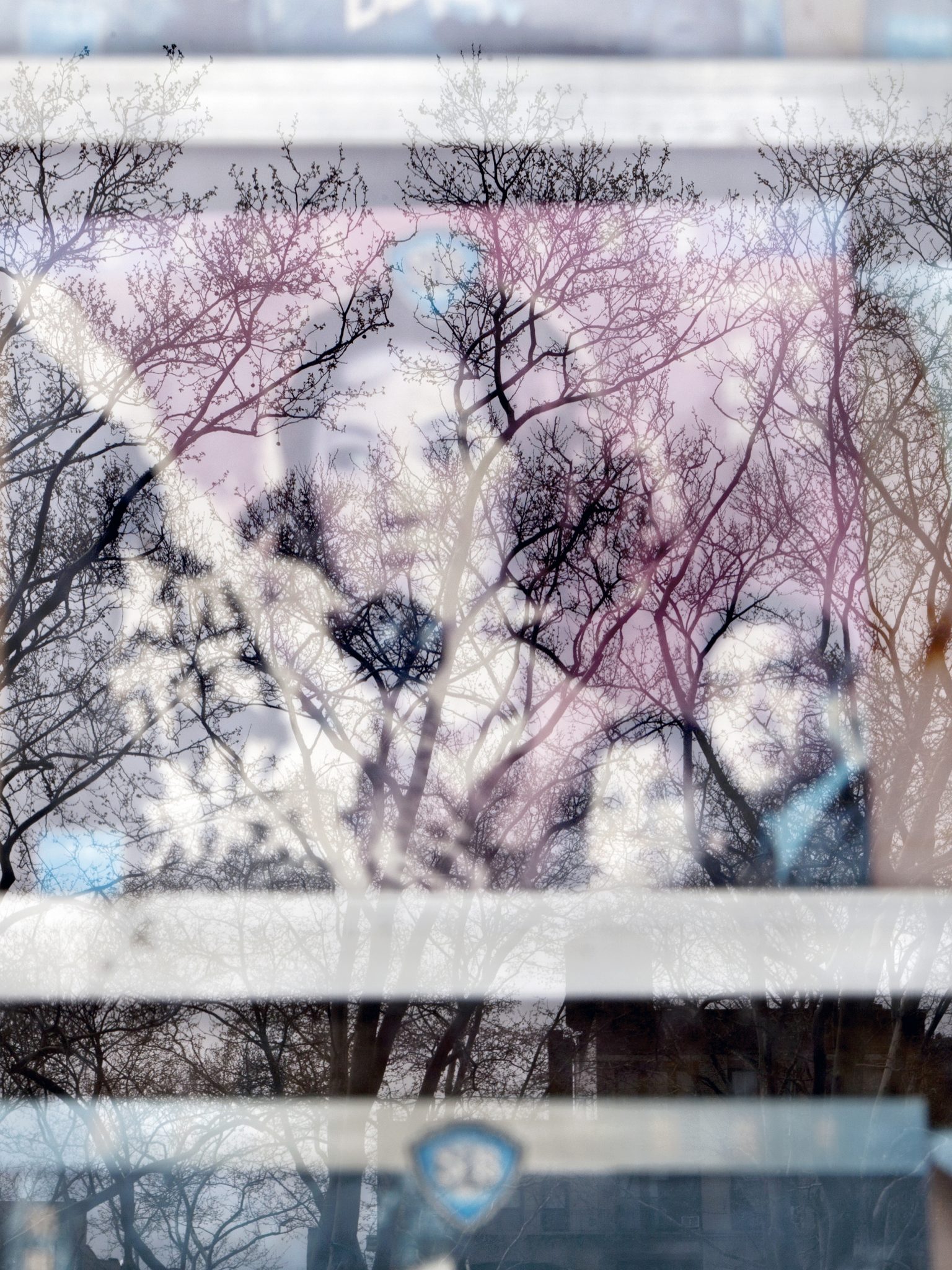Like many of us Millennials, Barb Choit has a thing for the 1980s. For her hilarious 2009 solo exhibition Nagel Fades, the artist purchased a collection of kitschy Patrick Nagel posters and subjected them to bleach baths, lamps and – brilliant! – a tanning bed, turning that tacky sunning device into a fabulously photographic apparatus. Nagel’s graphic, art deco-derived illustrations of female figures clad in spandex, dangly earrings and bulky sunglasses were thus prematurely patinated, their comically outré, Dynasty-like digs discoloured and faded to the point of illegibility.
For Fade Diary, Choit drops her white-trash light source for, boringly, the sun. In the process, her work loses much of its camp appeal. Walking through New York City neighbourhoods, particularly Brooklyn’s Bushwick and Greenpoint, Choit photographed faded posters, maps and advertisements in barbershops, hair salons, travel agencies and other shop windows. These often forlorn sites are alluded to by a reproduction neon sign in the gallery window reading ‘12 Photos & Fades’ in luminescent blue.
Barbershop Fade #8, #1 and #2 (all works 2012) feature gridded portraits of outmoded male hairstyles from the late 1980s. Variously faded to light blue and brown, stained and torn, the photos are also closely cropped so that reflections of the street caught by the shop windows blend in with the images. In Barbershop Fade #7, a glass door included in the frame further abstracts Choit’s images, as the gridded portraits reflect and fold into each other like an endlessly repeating pattern. Other works feature objects. Ajax and Colgate toothpaste figure prominently in Faded Object #1 (With Bleach Alternative), while nearly unidentifiable paper ephemera and straws comprise King City.
Turning to outdated conceptions of glamour, Untitled Faded Beauty (Heart Pendant) and Untitled Faded Beauty (NYPD #2) are more straightforward c-prints of advertisements. With pursed lips and slender arms, the former work’s model is nearly bleached out to a clean cream; while the latter, with impossibly pouffy hair, looks at the viewer from within her angled storefront window. Resembling Richard Prince’s female archetypes, these ads are presented by Choit nearly as-is, as if to trouble them, though they don’t really. Their blurry images and surface effects defeat the purpose.
The artist’s perceptual studies of store windows are perhaps more evocative of Eugène Atget’s obsessively shot Parisian storefronts (as mentioned in the show’s press release) than of Prince’s appropriations. But with their canny blending of consumer goods and street reflections, Choit’s photographs are so redolent of Atget that one wonders why she made them in the first place. After all, it’s one thing to evoke an artistic influence but another to ape it entirely. The photographs in Fade Diary may be beautiful and visually striking, but they do little to differentiate themselves from their aesthetic forebear. Rather than any meaningful commentary on gentrification (as the gallery claims), the work comes off as vacant as its models’ stares and, regrettably, as redundant as Atget was original.
This article was first published in the January & February 2013 issue.
